During the pandemic, the National Museum of Mathematics found new ways to build human connections.
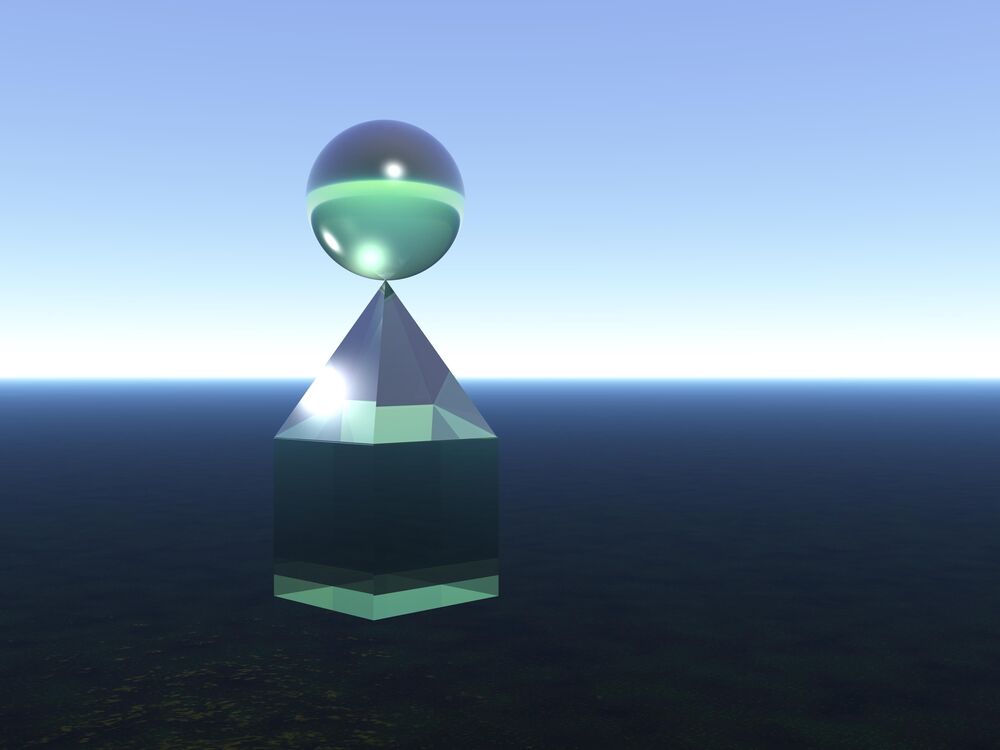

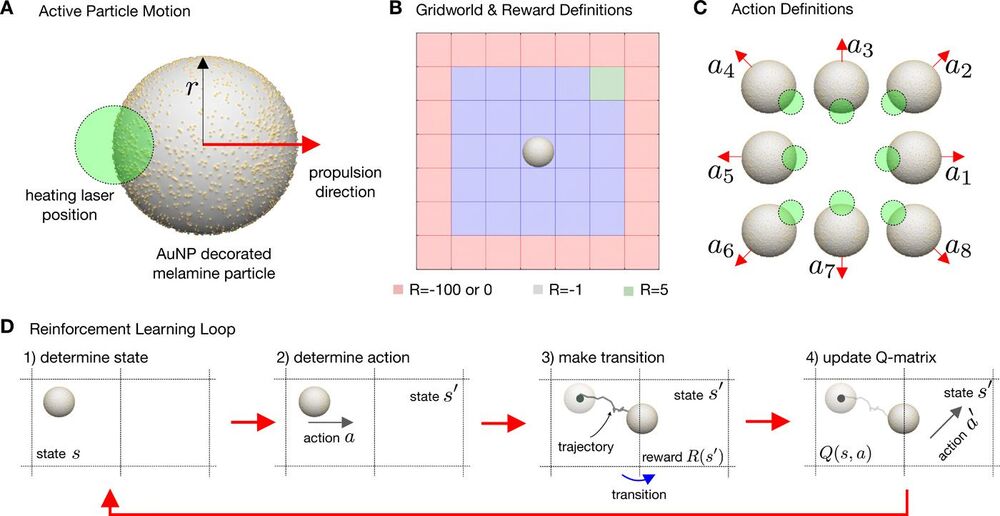
Artificial microswimmers that can replicate the complex behavior of active matter are often designed to mimic the self-propulsion of microscopic living organisms. However, compared with their living counterparts, artificial microswimmers have a limited ability to adapt to environmental signals or to retain a physical memory to yield optimized emergent behavior. Different from macroscopic living systems and robots, both microscopic living organisms and artificial microswimmers are subject to Brownian motion, which randomizes their position and propulsion direction. Here, we combine real-world artificial active particles with machine learning algorithms to explore their adaptive behavior in a noisy environment with reinforcement learning. We use a real-time control of self-thermophoretic active particles to demonstrate the solution of a simple standard navigation problem under the inevitable influence of Brownian motion at these length scales. We show that, with external control, collective learning is possible. Concerning the learning under noise, we find that noise decreases the learning speed, modifies the optimal behavior, and also increases the strength of the decisions made. As a consequence of time delay in the feedback loop controlling the particles, an optimum velocity, reminiscent of optimal run-and-tumble times of bacteria, is found for the system, which is conjectured to be a universal property of systems exhibiting delayed response in a noisy environment.
Living organisms adapt their behavior according to their environment to achieve a particular goal. Information about the state of the environment is sensed, processed, and encoded in biochemical processes in the organism to provide appropriate actions or properties. These learning or adaptive processes occur within the lifetime of a generation, over multiple generations, or over evolutionarily relevant time scales. They lead to specific behaviors of individuals and collectives. Swarms of fish or flocks of birds have developed collective strategies adapted to the existence of predators (1), and collective hunting may represent a more efficient foraging tactic (2). Birds learn how to use convective air flows (3). Sperm have evolved complex swimming patterns to explore chemical gradients in chemotaxis (4), and bacteria express specific shapes to follow gravity (5).
Inspired by these optimization processes, learning strategies that reduce the complexity of the physical and chemical processes in living matter to a mathematical procedure have been developed. Many of these learning strategies have been implemented into robotic systems (7–9). One particular framework is reinforcement learning (RL), in which an agent gains experience by interacting with its environment (10). The value of this experience relates to rewards (or penalties) connected to the states that the agent can occupy. The learning process then maximizes the cumulative reward for a chain of actions to obtain the so-called policy. This policy advises the agent which action to take. Recent computational studies, for example, reveal that RL can provide optimal strategies for the navigation of active particles through flows (11–13), the swarming of robots (14–16), the soaring of birds , or the development of collective motion (17).
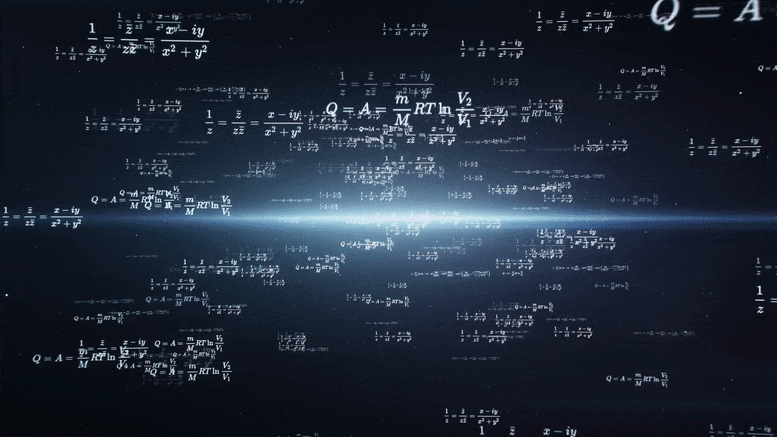
The 21-digit solution to the decades-old problem suggests many more solutions exist.
What do you do after solving the answer to life, the universe, and everything? If you’re mathematicians Drew Sutherland and Andy Booker, you go for the harder problem.
In 2019, Booker, at the University of Bristol, and Sutherland, principal research scientist at MIT, were the first to find the answer to 42. The number has pop culture significance as the fictional answer to “the ultimate question of life, the universe, and everything,” as Douglas Adams famously penned in his novel “The Hitchhiker’s Guide to the Galaxy.” The question that begets 42, at least in the novel, is frustratingly, hilariously unknown.
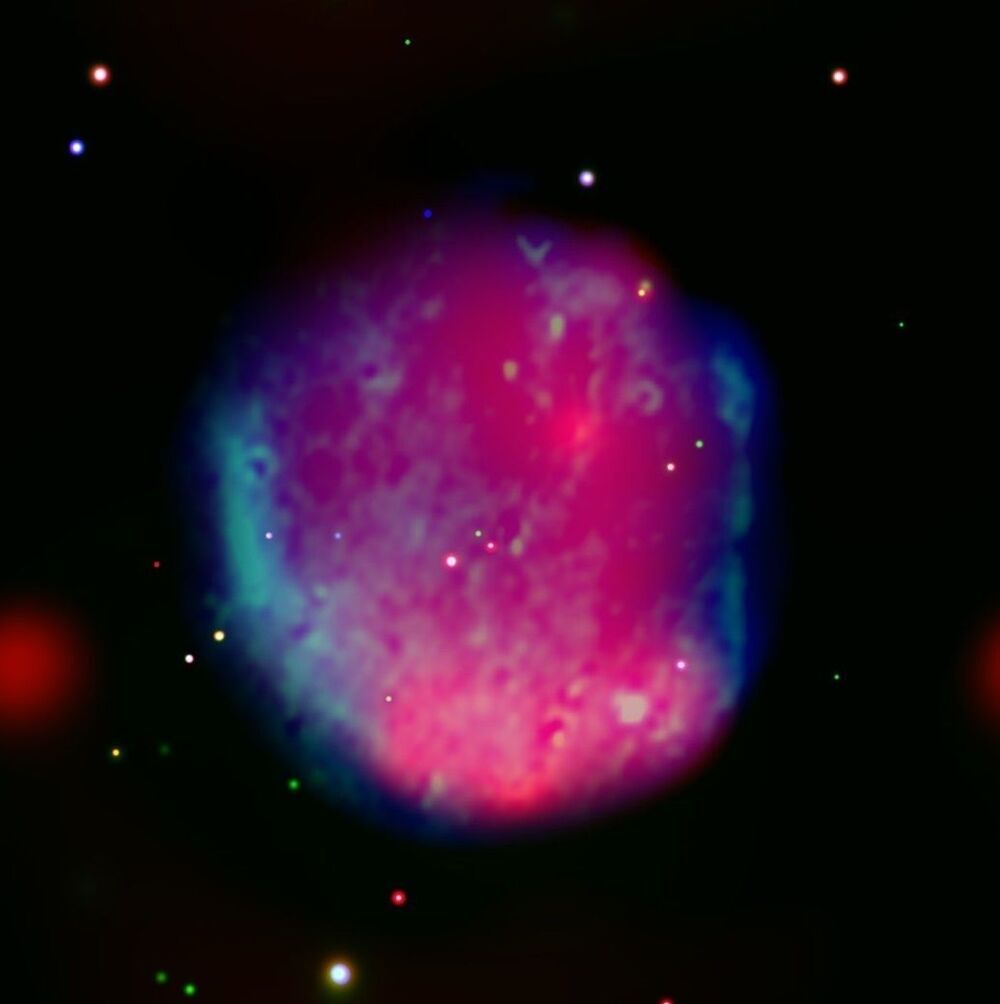
Our sky is missing supernovas. Stars live for millions or billions of years. But given the sheer number of stars in the Milky Way, we should still expect these cataclysmic stellar deaths every 30–50 years. Few of those explosions will be within naked-eye-range of Earth. Nova is from the Latin meaning “new”. Over the last 2000 years, humans have seen about seven “new” stars appear in the sky – some bright enough to be seen during the day – until they faded after the initial explosion. While we haven’t seen a new star appear in the sky for over 400 years, we can see the aftermath with telescopes – supernova remnants (SNRs) – the hot expanding gases of stellar explosions. SNRs are visible up to a 150000 years before fading into the Galaxy. So, doing the math, there should be about 1200 visible SNRs in our sky but we’ve only managed to find about 300. That was until “Hoinga” was recently discovered. Named after the hometown of first author Scientist Werner Becker, whose research team found the SNR using the eROSITA All-Sky X-ray survey, Hoinga is one of the largest SNRs ever seen.
Hoinga is big. Really big. The SNR spans 4 degrees of the sky – eight times wider than the Full Moon. The obvious question – how could astronomers not have already found something THAT enormous? Hoinga is not where we typically are looking for supernova. Most of our SNR searches are focused on the plane of the Galaxy toward the Milky Way’s core where we’d expect to find the densest concentration of older and exploded stars. But Hoinga was found at high latitudes off the plane of the Galaxy.
Furthermore, Hoinga hides in the sky because it’s so large. At this scale, the SNR is difficult to distinguish from other large structures of dust and gas that make up the Galaxy known as the “Galactic Cirrus.” It’s like trying to see an individual cloud in an overcast sky. The Galactic Cirrus also outshines Hoinga in radio light, often used to search for SNRs, forcing Hoinga to hide in the background. Cross referencing with older radio sky surveys, the research team determined Hoinga had been observed before but was never identified as an SNR due to its comparatively faint glow in radio. Here eROSITA has an advantage as it sees X-rays. Hoinga shines brighter in X-ray light than the Galactic Cirrus allowing it to stand out from the Galaxy to be discovered.
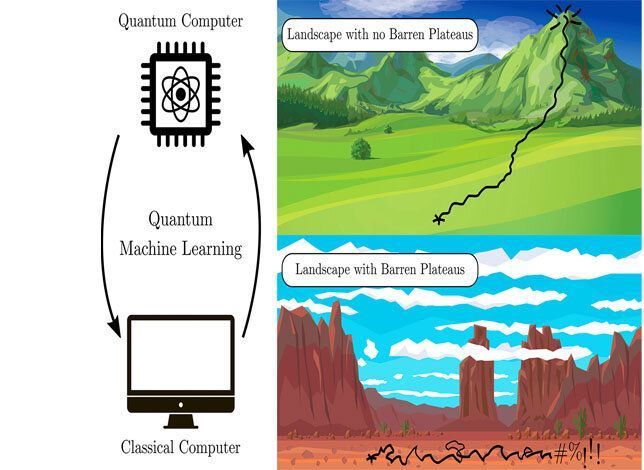
Many machine learning algorithms on quantum computers suffer from the dreaded “barren plateau” of unsolvability, where they run into dead ends on optimization problems. This challenge had been relatively unstudied—until now. Rigorous theoretical work has established theorems that guarantee whether a given machine learning algorithm will work as it scales up on larger computers.
“The work solves a key problem of useability for quantum machine learning. We rigorously proved the conditions under which certain architectures of variational quantum algorithms will or will not have barren plateaus as they are scaled up,” said Marco Cerezo, lead author on the paper published in Nature Communications today by a Los Alamos National Laboratory team. Cerezo is a post doc researching quantum information theory at Los Alamos. “With our theorems, you can guarantee that the architecture will be scalable to quantum computers with a large number of qubits.”
“Usually the approach has been to run an optimization and see if it works, and that was leading to fatigue among researchers in the field,” said Patrick Coles, a coauthor of the study. Establishing mathematical theorems and deriving first principles takes the guesswork out of developing algorithms.


Hungarian mathematician László Lovász and Israeli computer scientist Avi Wigderson will share the prize, worth 7.5 million Norwegian kroner (US$886000), “for their foundational contributions to theoretical computer science and discrete mathematics, and their leading role in shaping them into central fields of modern mathematics”, the Norwegian Academy of Science and Letters announced on 17 March.
The work of winners László Lovász and Avi Wigderson underpins applications from Internet security to the study of networks.
5 january 2020.
This paper proposes the use of Flower Constellation (FC) theory to facilitate the design of a Low Earth Orbit (LEO) slotting system to avoid collisions between compliant satellites and optimize the available space. Specifically, it proposes the use of concentric orbital shells of admissible “slots” with stacked intersecting orbits that preserve a minimum separation distance between satellites at all times. The problem is formulated in mathematical terms and three approaches are explored: random constellations, single 2D Lattice Flower Constellations (2D-LFCs), and unions of 2D-LFCs. Each approach is evaluated in terms of several metrics including capacity, Earth coverage, orbits per shell, and symmetries. In particular, capacity is evaluated for various inclinations and other parameters. Next, a rough estimate for the capacity of LEO is generated subject to certain minimum separation and station-keeping assumptions and several trade-offs are identified to guide policy-makers interested in the adoption of a LEO slotting scheme for space traffic management.
Previous chapter Next chapter.
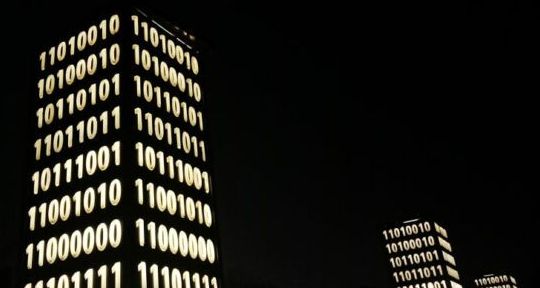
The debate holds a special interest for neuroscientists; since computer programming has only been around for a few decades, the brain has not evolved any special region to handle it. It must be repurposing a region of the brain normally used for something else.
So late last year, neuroscientists in MIT tried to see what parts of the brain people use when dealing with computer programming. “The ability to interpret computer code is a remarkable cognitive skill that bears parallels to diverse cognitive domains, including general executive functions, math, logic, and language,” they wrote.
Since coding can be learned as an adult, they figured it must rely on some pre-existing cognitive system in our brains. Two brain systems seemed like likely candidates: either the brain’s language system, or the system that tackles complex cognitive tasks such as solving math problems or a crossword. The latter is known as the “multiple demand network.”
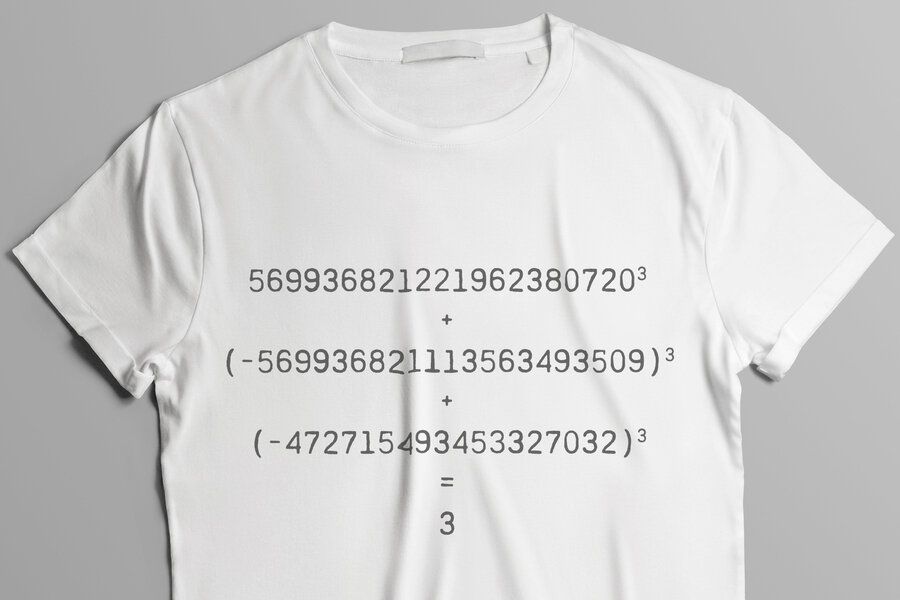
What do you do after solving the answer to life, the universe, and everything? If you’re mathematicians Drew Sutherland and Andy Booker, you go for the harder problem.
In 2019, Booker, at the University of Bristol, and Sutherland, principal research scientist at MIT, were the first to find the answer to 42. The number has pop culture significance as the fictional answer to “the ultimate question of life, the universe, and everything,” as Douglas Adams famously penned in his novel “The Hitchhiker’s Guide to the Galaxy.” The question that begets 42, at least in the novel, is frustratingly, hilariously unknown.
In mathematics, entirely by coincidence, there exists a polynomial equation for which the answer, 42, had similarly eluded mathematicians for decades. The equation x3+y3+z3=k is known as the sum of cubes problem. While seemingly straightforward, the equation becomes exponentially difficult to solve when framed as a “Diophantine equation”—a problem that stipulates that, for any value of k, the values for x, y, and z must each be whole numbers.